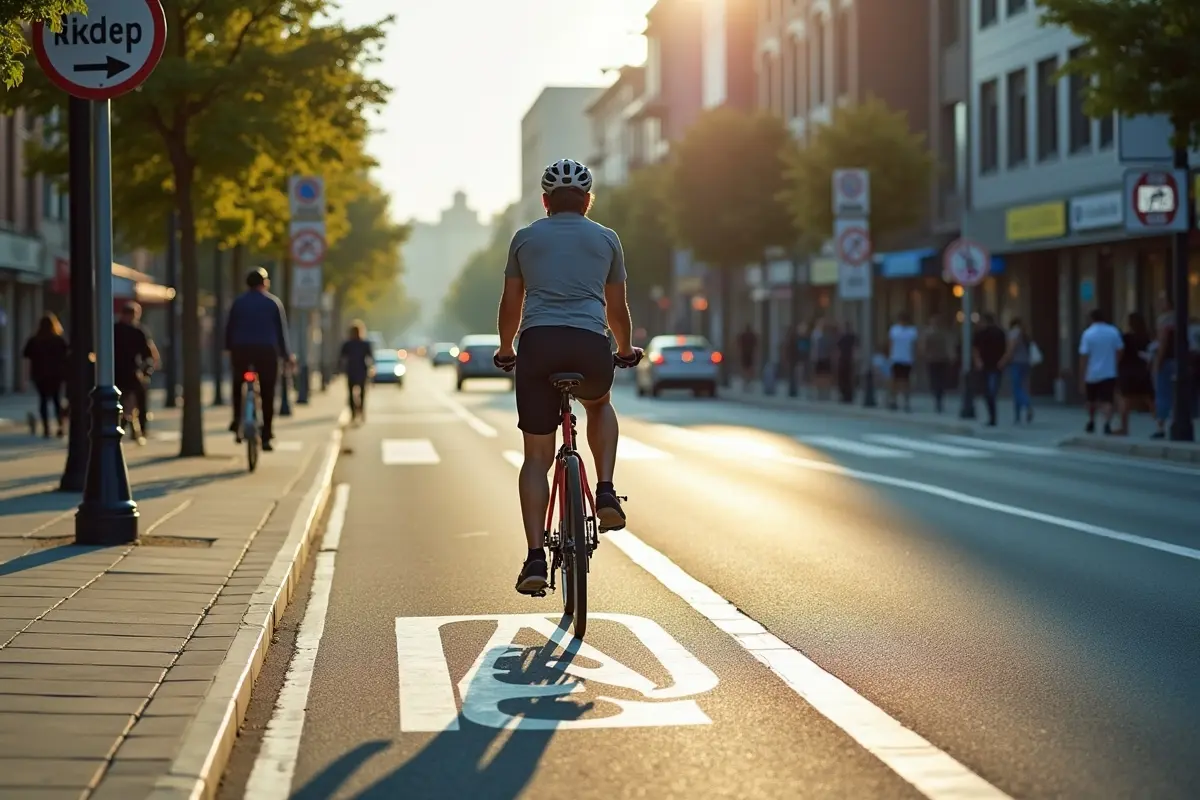Urban cycling has become increasingly vital as populations grow and communities seek healthier, more sustainable transportation options. Protected bike lanes are key, providing dedicated space and making roads safer. Separation from cars, through curbs or delineators, protects cyclists and encourages more to ride.
Cities implementing these measures experience immediate increases in ridership, demonstrating the transformative power of strong cycling infrastructure. To learn more about cyclist rights and safety advocacy, urban dwellers must understand how legal and policy measures can further protect cyclists.
Research shows protected bike lanes greatly boost safety perceptions, especially in cities like Chicago and D.C., making cycling more appealing. This improves ridership, reduces injuries, and promotes a cycling culture.
Smart Road Design and Technology Integration
The future of urban cycling safety goes beyond painted lines and barriers, with technology and smart road design reshaping city protection for cyclists. Features like adaptive traffic signals detect approaching cyclists and adjust signals to create safer crossings, reducing car-bike conflicts. Real-time hazard alerts from sensors and AI make informed travel safer and more standard in cities.
Expanding these measures can make cities more cyclist-friendly while maintaining efficiency for drivers and pedestrians. Linking with city mobility platforms also aids seamless transition between cycling and public transit, promoting active travel.
Comprehensive Urban Planning for Cyclist Safety
Meaningful urban cycling safety improvements arise from integrated urban planning that prioritizes biking in city plans, resulting in health and environmental benefits such as cleaner air, increased physical activity, and reduced reliance on fossil fuels. Investing in cycling and walking infrastructure helps meet climate goals, reduces global carbon emissions by 6%, and saves billions health-wise.
Urban spaces that promote walking and biking foster vibrant, resilient communities, encourage social engagement, and support healthier urban lifestyles, highlighting the importance of planning that centers on non-motorized transport.
Implementing Low-Speed Zones and Traffic Calming Measures
Lowering vehicle speeds and traffic calming are key to accessible cities for cycling. Globally, measures such as narrowing roads, installing speed bumps, and creating shared spaces prompt drivers to slow down, thereby protecting cyclists and improving safety for pedestrians and motorists.
These measures often lead to fewer injuries and deaths. Traffic calming is most effective with well-marked bike lanes and community education, promoting respect and shared responsibility among road users.
Community Engagement and Policy Advocacy
For cycling infrastructure to succeed, it must reflect community needs and input. Engaging residents in planning provides local insights, ensuring projects address neighborhood challenges and garner support. Policy advocacy is key to securing legislative and financial backing. Cities investing in outreach see faster progress, innovative solutions, and lasting partnerships. Resident and advocacy group participation amplifies cyclists’ voices, leading to more equitable city planning.
Challenges and Considerations
Despite the compelling case for safer streets, progress is not without obstacles. Limited funding, pre-existing urban layouts, and resistance to change can create barriers to the swift implementation of necessary cycling infrastructure.
Overcoming these hurdles requires a collaborative approach; city officials, urban planners, advocacy organizations, and residents must align their efforts to achieve safer, more inclusive streets. Shared goals and coordinated action help smooth the transition to bike-friendly cities, even in complex urban environments.
Conclusion
The future of urban cycling depends on a commitment to safer streets through the implementation of protected bike lanes, the smart integration of new technologies, and comprehensive urban planning. These investments yield broad societal benefits—improved safety, enhanced health, and a reduced environmental footprint. By working together to address challenges and champion cycling infrastructure, cities can pave the way for healthier and more sustainable urban living.




